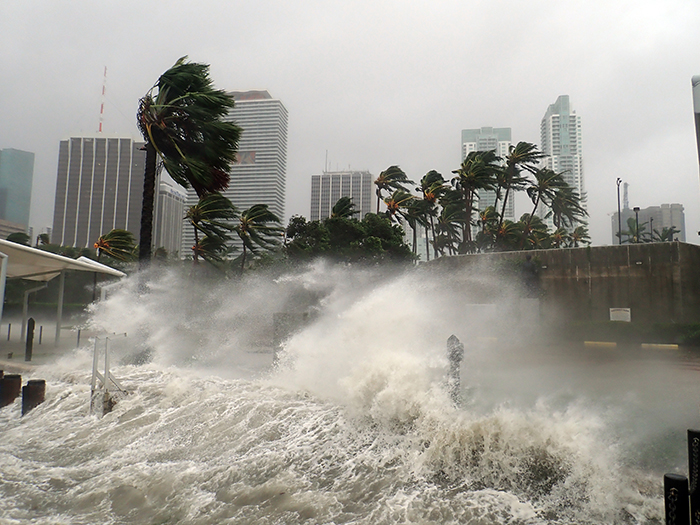Risk Insider: Joe Tocco
Let’s Ditch Weather Complacency
No one likes to get caught off guard. All too often that’s exactly what happens, especially when Mother Nature delivers an unexpected punch of severe weather.
We’ve certainly seen quite a few punches lately with quick moving storms wreaking havoc with torrential rain, powerful winds, life-threatening conditions and significant and costly damage.
In the Houston area alone, recent torrential rains and the subsequent flooding resulted in at least $45 million in property damage.
Weather complacency worries me more than 100 mph winds.
Now we’re in the midst of hurricane season. It’s expected to be a quiet one.
Some breathed a sigh of relief on that prediction. I didn’t.
Instead, I got a little worried because it often means we get complacent. We’re satisfied with how things are; we don’t take precautions or look for improvements.
Weather complacency worries me more than 100 mph winds.
Complacency can be costly at any time of the year. Consider this — one in four businesses forced to close for at least 24 hours because of a disaster never reopens.
That’s one of the big lessons from Sandy, where power outages were widespread and many businesses had to shut down for multiple days or weeks.
Extreme weather appears to be happening more frequently. Chalk it up to global warming, El Nino, rising sea levels, or whatever.
Taking all of these factors together, our properties are more vulnerable today than they were a decade ago … or yesterday, for that matter. For one, we have built many properties along shorelines where rising sea levels have made storm surge a greater concern. Secondly, extreme weather hits in areas that in past were relatively unscathed, whether from tsunamis to tornadoes to drought.
Now we’re in the midst of hurricane season. It’s expected to be a quiet one. Some breathed a sigh of relief on that prediction. I didn’t.
So the question is, do we enjoy a potentially quiet hurricane season or do we take action, shake off weather complacency and boost our weather resilience? Here’s what I’m thinking:
Let’s reinforce what needs reinforcing. Go all-out for continual improvement. Your insurer’s property loss prevention team can offer guidance on ways to make your buildings more water-tight, wind resistant and fire-retardant, to make sure roofs can hold heavy loads of snow. Ask them.
Strive for above average. Building codes are considered minimum legal standards that focus on occupant safety, not preserving building use, ensuring reuse or business continuity. At www.disastersafety.org, the Insurance Institute of Business and Home Safety (IBHS) offers business guidance during new construction or remodeling to improve and/or enhance the physical strength of their commercial structures with design features and construction practices that go beyond building codes.
Don’t be a sitting duck. Storms don’t always give a lot of warning but they often require action — boarding up windows, securing equipment, and moving things that could be harm’s way — so you have to be ready to take action. During Sandy, many art galleries in the NY’s Chelsea neighborhood suffered significant losses of art stored in basements. You can bet they have storage contingency plans now. Whether it’s art, vehicles or equipment, storing on higher ground — or in totally different locations — can prevent losses.
Have backup plans. Following Sandy, my office in downtown Manhattan was inaccessible for a week. With advance planning by our business continuity management team, we were able to relocate to other offices or hotels or work remotely to keep our business operating as usual, at a time when many of our clients needed us to be fully operational.
No one really knows what the 2015 hurricane season, much less what tomorrow’s weather, will bring. But we do know that it can be costly to just sit back and do nothing. If there are actions that can be taken to prevent the worst from happening, let’s take them.










